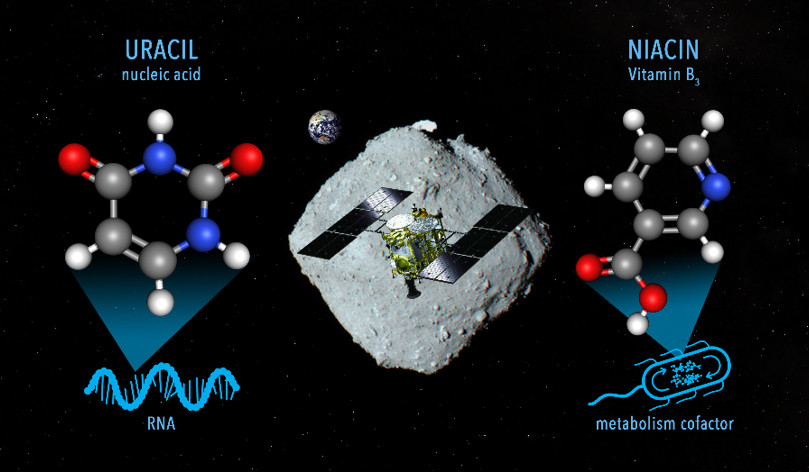[Press Release]
Nucleobases and Vitamins Exist on Asteroid Ryugu!
~Expectations for the Elucidation of Molecular Evolution and the Origin of Life before the Birth of Life~

Joint Press Release
Shogo Tachibana, Professor at the Institute of Space and Planetary Science (ISAS) / Specially Appointed Professor at the Institute of Space and Astronautical Science (JAXA)
An international research group led by Associate Professor Yasuhiro Oba of the Institute of Low Temperature Science, Hokkaido University, Senior Researcher Yoshinori Takano of the Japan Agency for Marine-Earth Science and Technology (JAMSTEC), and Professor Hiroshi Naraoka of the Graduate School of Science, Kyushu University, has successfully detected uracil, a nucleobase contained in all RNA of Earth life, in particles from the asteroid Ryugu brought back by the asteroid probe “Hayabusa2 They succeeded in detecting uracil, a nucleobase contained in the RNA of all life on Earth, in a particle from the asteroid Ryugu brought back by the Hayabusa2 spacecraft. In addition, vitamin B3 (niacin), an important coenzyme related to the metabolism of life, was also detected in the same sample.
In December 2020, the asteroid Ryugu sample was delivered to Earth by the asteroid probe Hayabusa2, making it the world’s first sample collected directly from a carbonaceous asteroid to be analyzed in a laboratory (published in Science on February 10, 2022). The Soluble Organic Molecules Analysis Team, one of the initial analysis subteams, has previously demonstrated the presence of various organic compounds, such as amino acids and carboxylic acids, in Ryugu samples (published in Science on February 24, 2023). In this study, we focused on nitrogen-containing cyclic organic compounds (nitrogen heterocyclic compounds) and verified their presence in Ryugu samples in detail.
Using an ultra-sensitive analytical method developed by the research team, they succeeded in detecting uracil, one of the nucleobases contained in the RNA of all Earth life, and vitamin B3 (niacin), one of the coenzymes essential for the metabolism of life, in a Ryugu sample of about 10 milligrams. These detections provide a real picture of the chemical evolution of organic molecules and strongly support the theory that components supplied by extraterrestrial materials such as carbonaceous meteorites (i.e., asteroid fragments) were the materials for the ultimate mystery in science: how the first life on the primitive Earth was created before the birth of life. The results of this research are expected to be published in 2023.

For more information, please refer to the following
Graduate School of Science press release: https://www.s.u-tokyo.ac.jp/ja/info/8330/
Publication URL: https://doi.org/10.1038/s41467-023-36904-3

